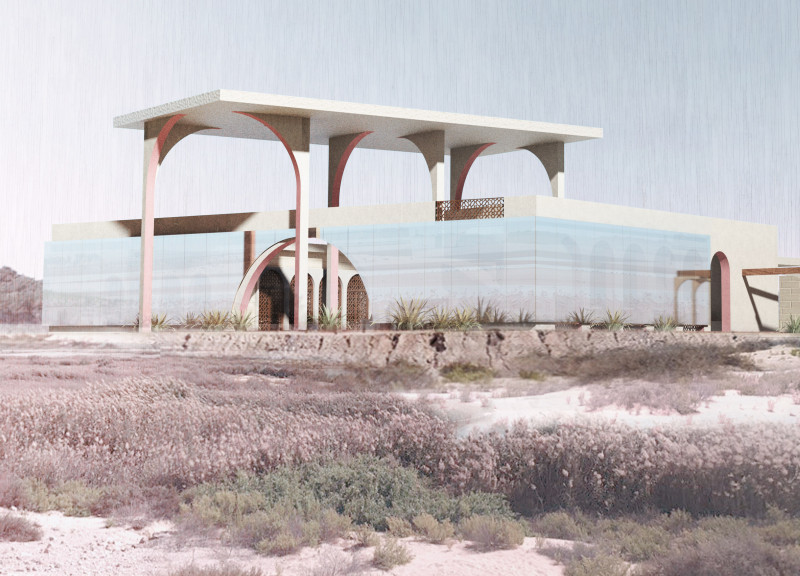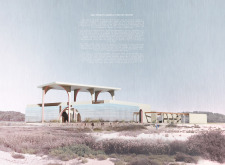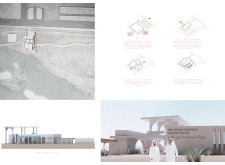5 key facts about this project
The Abu Dhabi Flamingo Visitor Center is located within Al Wathba Wetland, a known habitat for flamingos and a destination for eco-tourism. The design combines practical use with an appreciation for nature, providing a space for visitors to observe wildlife while also learning about preservation efforts. The concept is rooted in sustainable practices and cultural elements, making it a space that serves both educational and recreational functions.
Architectural Orientation and Aesthetic
The visitor center is oriented to the south and east, which enhances views of the wetlands and allows natural light to fill the interior. This placement provides accessibility from the north, aligning it with existing paths. The building features a reflective façade that mirrors the surrounding landscape, which helps blend the structure into its environment. The pink arches in the courtyard evoke the long legs of flamingos, marrying traditional local motifs with a modern design approach.
Material Selection
Material choices play an important role in the visitor center's design. Coral stone forms the ground surface, offering thermal benefits and integrating the building into its natural surroundings. Prefabricated concrete blocks are used for the exterior walls, providing strength while keeping the ecological impact low. For the roof structure, palm wood is selected, reflecting local availability and adding a warm aesthetic to the building's interiors.
Visitor Engagement and Environmental Integration
A key focus of the design is to enhance visitor engagement. The interior layout includes learning spaces with higher ceilings and visual pathways that guide guests through the environment. These areas are not just educational; they foster an appreciation for the wetland’s ecology. Effective natural ventilation, achieved through a higher roof above the courtyard, supports climate management while adding to visitor comfort.
The architecture creates a thoughtful connection between built spaces and the surrounding nature, resulting in an inviting area that reflects the ecological and cultural significance of the wetlands.






















































